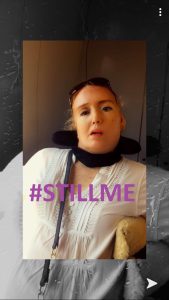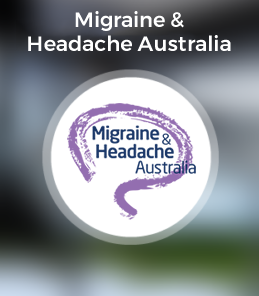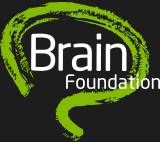Description
Locked-in Syndrome (LiS) is a rare neurological disorder usually resulting from a lesion to a region of the brainstem called the pons, most frequently an ischemic pontine lesion. The locked-in syndrome (LiS) is characterised by quadriplegia with preserved vertical eye and eyelid movements and retained cognitive abilities. Recent research indicates that damage to different structures in the pons, mesencephalon and thalamus are attributed to symptoms of classical, complete and incomplete LiS. Other differential diagnoses which may be mistaken for LiS are cognitive motor dissociation (CMD) and akinetic mutism.
Additional conditions that can cause locked-in syndrome include infection in certain portions of the brain, tumours, loss of the protective insulation (myelin) that surrounds nerve cells (myelinolysis), inflammation of the nerves (polymyositis), and certain disorders such as amyotrophic lateral sclerosis (ALS).
Any of the above can cause the complete disruption of all the motor fibres running from grey matter in the brain via the spinal cord resulting in interruption to the body’s muscles and also damage to the centres in the brainstem important for facial control, breathing, swallowing and speaking. However consciousness and cortical functions are preserved. It is of vital importance to accurately test and assess the cognitive abilities of all patients in disorders of consciousness using one of the recognised batteries of evaluation such as the Coma Recovery Scale-Revised (CRS-R). Time and patience are of the utmost importance in evaluating a patient as it is extremely tiring for them to attempt to respond with, in many cases, only eye movement or blinking.
The American Congress of Rehabilitation Medicine (1995) defines LiS as a syndrome characterized by preserved awareness, relatively intact cognitive functions, and by the ability to communicate while being paralysed and voiceless.
Bauer described three categories of LIS (Bauer et al., 1979).
- Complete or total LIS: Quadriplegia and anarthria. No eye movement.
- Classic LIS: Preserved vertical eye movement and blinking.
- Incomplete LIS: Recovery of some voluntary movements in addition to eye movements
Treatment
Treatment should first be aimed at the underlying cause of the disorder. For example, reversal of a basilar artery blood clot (thrombosis) with intra-arterial thrombolytic therapy may be attempted up to six hours after symptoms onset. Tumours may be treated with intravenous steroids or radiation.
Often affected individuals in the beginning may need an artificial aid for breathing and will have a tracheotomy (a tube going in the airway via a small hole in the throat).
Feeding and drinking will not be possible via the mouth (it may cause respiratory infection by running into the lungs rather than stomach), therefore initially patients will be fed through a feeding tube. Following assessment of their swallowing ability, most patients gradually start with eating smooth purees and thickened liquids. Tracheostomy, mechanical ventilation, cardiac failure, chronic obstructive pulmonary disease, uncontrolled emotional lability, improper positioning during feeding, undernutrition or dehydration are factors that may lead the healthcare team to remain cautious regarding feeding through the mouth.
Early recognition of LiS is important for rehabilitation. It is essential that LiS patients play an active role in decision-making processes regarding their rehabilitation. A reliable code to indicate yes and no usually constitutes the basis of communication. Initially many use eye movements and blinking to communicate. Because language skills are usually intact, many employ a system of spelling via an alphabetical code whereby the person with LiS indicates the desired letter by moving their eyes or blinking.
Early on, individuals with LiS need to be equipped with a means to indicate their needs or a desire to communicate. Should the patient regain control of a reliable movement, that could enable the activation of a switch enabling access to communication devices (eg computer with synthetic voice).
Attention should also be aimed at the early rehabilitation of the small voluntary movements that remain or recover (often in a finger or foot or swallowing and sound production). Rehabilitation and various supportive therapies are highly beneficial and should be started as early as possible.
To promote functional use of the patient’s emergent voluntary movements, it can be helpful to progressively move the patient into a more vertical position. Exercises to maintain range of motion, as well as breathing, eyes, head, trunk and limb control exercises are performed throughout the rehabilitation process. Stretching exercises, use of antispasmodic drugs or botulinum toxin injections help to decrease spasticity. Recovery of near-normal motor control, speaking, swallowing and walking are extremely unusual.
Prognosis (outlook for recovery)
According to the International Encyclopaedia of Rehabilitation and researchers, recovery of horizontal eye movements prior to the first four weeks is associated with a good neurological prognosis (Bauer et al., 1979). Recovery of the oral-motor area (speech and swallowing) begins later and spreads over a longer period as does recovery of movement in distal parts of limbs of individuals.
The great majority of patients are weaned from their tracheostomy during the first months with one third able to utter isolated comprehensible words after the first year (Casanova et al., 2003). During inpatient rehabilitation, more than 50% of individuals start feeding orally and their gastrostomy is removed during the first year.
Devices to aid in communication and other assistive technologies have proven beneficial as well as allowing individuals to become active members of society (see Further Information section below). Infrared eye tracking devices now permit affected individuals to use a computer with artificial voice, control their environment, surf on the internet and send email. In rare cases, some individuals have recovered limited motor abilities, however, in most cases such recovery does not occur. Those who recover some motor control in hand or head (as will over half of LiS patients) can use this to communicate with a computer and sometimes control their wheelchair.
Recent studies have noted that despite significant motor disability affected individuals can and often do retain a good quality of life.
Level of independence is directly related to motor recovery. The majority of LiS patients can move around independently, most often in powered wheelchair. However very few reach a level of motor recovery enabling them to feed and perform activities of daily living on their own (Beaudoin and De Serres, 2008). Even after several years, spasticity often remains a significant problem for many. Of note, individuals with LIS usually do not suffer from a pain syndrome during the chronic phase.
Facebook Members Group
LiSA is intended to be a safe place for those living locked-in and for their families, friends and carers to virtually meet, chat, laugh and share information. We ask that all members behave politely, kindly and in a respectful manner to all other members.
International LiS Webinar
The Locked-In Syndrome International Conference was established in June 2021 by Shannan Keen of ARDoC. Since then the event has featured leading LiS researchers, presentations from patients and advocates, and updates on new technology. It is a wonderful opportunity to meet fellow patients and learn about new assistive technologies and treatments. You can read about previous events and watch the webinar recordings below.
2nd International LiS Conference – 2023
The 2nd International LiS Conference, organised and hosted by Shannan Keen, was held in June 2023. Marvellous presentations were given by Prof Steven Laureys (well-known neurologist discussing LiS and the power of the mind), Assoc Prof Coralie Graham (the importance of ensuring all people are treated without bias by medical staff and carers), Dr Phil Kennedy (brain/computer interfaces), Lisa Paling (neurophysio speaking about rehabilitation techniques), Prof Dorothee Lule (quality of life studies in LiS), Dr Ujwal Chaudhary (brain-computer interface) and James Brinton (Eye Gaze technology to assist in keyboard communication). There were also, for the first time, four presentations by people who are living LiS.
Watch the 2022 event recordings >>
3rd International LiS Conference – 2024
The 3rd International LiS Conference took place on June 10th, 2024. It was co-hosted by Shannan Keen and Bouke van Balen. The schedule included presentations from Prof Coralie Graham (cultural safety in healthcare), A/Prof Fernando Vidal (anthropology and phenomenology of LiS), Jane Svartskuren & Helle Walseth Nilsen (Norwegian Sunnaas Center for LiS), A/Prof Frank Becker (research at Sunnaas Center), A/Prof David Moses (brain/computer interfaces as assistive communication), and Esther Kruitwagen (quality of life). There were also four presentations from people who are either living or caring for someone locked-in.
Watch the 2023 event recordings [YouTube playlist] >>
Download recordings [Online folder] >>
4th International LiS Conference – 2025
Next year’s event will take place on June 9th, 2025. The speakers and topics will be shared closer to the event, but you can register now via the link below.
Register for International LiS Conference 2025 >>
If you are living Locked-in and would like to give a Presentation or if you, your friends or colleagues are interested in Presenting at next year’s LiS Webinar, please contact Shannan Keen or reach her at the Locked-in Syndrome Association Community Forum (on Facebook; https://www.
Further Information and Support
Click here for the Australian Register for Disorders of Consciousness (ARDoC)
- Fernando Vidal is from the Department of Anthropology, Philosophy and Social work at the Universitat Rovira i Virgili, Catalonia in Spain. Vidal and his team are currently running a research project which aims to understand how people living Locked-in experience and view the ‘self’ and others, their self-identity and their views about the conditions and circumstances that make life of value to them. He would like to hear from anyone living LiS, their carers and loved ones. His contact email is: fernando.vidal@icrea.cat
- The following paper was written in March 2023 by PhD and MD, Phil Kennedy. Phil has worked for many years to improve the diagnostic methods and quality of life of those suffering severe brain trauma. It is a thoughtful and uplifting paper.
THE BRIGHTENING FUTURE OF LOCKED-IN PERSONS – Click to read
- A perspective article on how brain-computer interfaces (BCIs) can help those who are unable to speak due to paralysis:
jamanetwork.com/journals/jama/article-abstract/2758116 - An article showing for the first time that words can be decoded from the brain activity of a person with paralysis as they attempt to speak:
nejm.org/doi/full/10.1056/NEJMoa2027540 - Sun-Mi Venema is a woman in the Netherlands, living locked-in, who has made remarkable progress in recovering. Visit her website at www.sun-mivenema.
nl to learn about her story. She has also written a book titled “Dark Clouds; Which Path Would You Choose“.
Each of the following books has been written by a person who is living Locked-in:
- Allatt, K., Running Free: Breaking Out From Locked-In Syndrome, 2011: Accent Press Ltd.
- The Diving Bell and The Butterfly by Jean-Dominque Bauby
- Marsh, R., Locked In: One man’s miraculous escape from the terrifying confines of Locked-in syndrome, 2014, London, UK: PIATKUS BOOKS.
- Pistorius, M., Ghost Boy, 2012: Simon & Schuster Ltd.
- Slowly Making Ripples by Dawn Faizey-Webster available on Amazon
- Limitless; Small Moves to your Greatest Life After a Paralyzing Stroke by Alfaro, Brisa available on Amazon
- Dick van der Heijde; M’n ogen zeggen alles (only available in Dutch, translation: “My eyes are telling everything”)
- Dick van der Heijde; Je zal m’n ouders maar zijn (only available in Dutch, translation: “if only you would be my parents”)
- Sun-Mi Venema, Dark Clouds; Which Path Would You Choose? (English) or Donkere wolken; welk pad zou jij kiezen? (Dutch). View the English or Dutch versions of the book by switching the language in the top menu of Sun-Mi’s website.
For information about Coma Arousal Therapy, see Dr Edward (Ted) Freeman (1987) The Catastrophe of Coma. Publisher: David Bateman
Information
Brain Injury Australia
braininjuryaustralia.org.au
Synapse – Australia’s Brain Injury Organisation
Address: Level 1/262 Montague Road, West End QLD 4101
Mail: PO Box 3356, South Brisbane QLD 4101
Tel 1800 673 074
Email info@synapse.org.au
synapse.org.au
Coma Science Group (Belgium)
www.coma.uliege.be
Families4Families – Acquired Brain Injury support network
Phone: 0433 388 250
Email: office@families4families.org.au
Web: families4families.org.au
International MindCare Foundation
National Institute of Neurological Disorders and Stroke
www.ninds.nih.gov/Disorders/All-Disorders/Locked-Syndrome-Information-Page
HeadWay (UK)
headway.org.uk/about-brain-injury/individuals/effects-of-brain-injury/coma-and-reduced-awareness-states/comacare.com
Brain Injury Resource Center
www.headinjury.com
Neural Signals Inc.
www.neuralsignals.com
The mission of Neural Signals Inc. is to provide brain/computer communication systems for individuals with LiS.
Neural Signals have designed the LISKeyMicro – a tiny device that helps the totally paralyzed use a computer to communicate.
Brain Trauma Foundation (USA)
braintrauma.org
This webpage may be helpful for diagnosticians and clinicians dealing with patients who have suffered TBI:
headsafe.com
Reviewed July 2023 by: Shannan Keen, MBMSc, Brain and Mind Research Institute, University of Sydney
DISCLAIMER: The information provided is designed to support, not replace, the relationship that exists between a patient / site visitor and his / her existing health care professionals.





 The Brain Foundation is the largest, independent funder of brain and spinal injury research in Australia. We believe research is the pathway to recovery.
The Brain Foundation is the largest, independent funder of brain and spinal injury research in Australia. We believe research is the pathway to recovery.